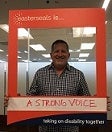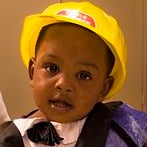
TCES Resources
The resources below address coaching and education, evidenced based practice, routines based intervention and the IDEA Part C requirement to serve children in their natural environment.
- http://coachinginearlychildhood.org/nlepractices.php
- http://www.waisman.wisc.edu/birthto3/Top_10Mistakes.pdf
- Primary Service Providers & Coaching in Early Intervention Programs
The following are links to national professional organizations for disciplines that work within the Early Steps program.
- AOTA: http://www.aota.org/-/media/Corporate/Files/Practice/Children/AOTA-Advisory-on-Primary-Provider-in-EI.pdf
- APTA: Vanderhoff (2004). The permalink on their website has moved. Please see the link below referencing Vanderhoff et al. (2004) to research the reference.
This is a list of contemporary references from national organizations and peer-reviewed journals (Not in APA format due to multiple disciplines utilizing these resources) developed by Dr. Emily Schaffer and Jason Hangauer at the University of South Florida. A plethora of references exist in the literature as well as in national organization position statements regarding providing services to children birth-three. This is a non-exhaustive list.
- Dunst, C. J., Brookfield, J., & Epstein, J. (1998). Family-centered early intervention and child, parent and family benefits: Final report. Asheville, NC: Orelena Hawks Puckett Institute.
- Dunst, C.J., Brookfield, J. & Epstein, J. (1998, December). Family centered early intervention and child, parents and family benefits: Final Report. Ashville, NC: Orlena Hawks Puckett Institute.
- Dunst, C.J. (2000). Revisiting "Rethinking Early Intervention." Topics in Early Childhood Special Education, 20, (2), 95-104.
- Hanft, B., Rush, D. & Shelden, M. (2004). Coaching Families and Colleagues in Early Childhood. Baltimore, MD: Paul H. Brookes Publishing Co.
- Keenan-Rich, N. (February 5, 2002). Early Intervention: Is Being a Good SLP Good Enough? The ASHA Leader (“Our goal is that parents will be able to say, ‘I can help my child’”).
- Shelden, M. & Rush, D. (2011). The Early Childhood Coaching Handbook. Baltimore, MD: Paul H. Brookes Publishing Co.
- Shonkoff, J., Hauser-Cram, P., Wyngarden-Krauss, M. W., & Upshur, C. C. (1992). Development of infants with disabilities and their families: Implications for theory and service delivery. Monographs of the Society for Research in Child Development, 57, 6, 230-256.
- Sloper, P. & Turner, S. (1992). Service needs of families of children with severe physical disability. Child: Care, Health, and Development, 18, 259-282.
- Snow, K. Reflections on Early Intervention Services: Revolutionary Common Sense. Braveheart Press. Retrieved from: www.disabilityisnatural.com
- Vanderhoff, M. (2004). Maximizing Your Role in Early Intervention. Physical Therapy Magazine. (“One reason the primary service provider evolved is that young children should not have to tolerate the interaction with four or five different professionals every week. With a primary service provider, a child can develop a significant relationship with one provider who is collaborating with the other team members" (quoting Long, T.)). Retrieved from: http://www.apta.org/AM/Template.cfm?Section=search&template=CM/HTMLDisplay.cfm&ContentID=8534
- Woods, J. (March 25, 2008). Providing Early Intervention Services in Natural Environments. The ASHA Leader. (the primary service provider model “helps avoid fragmentation of services and frequent home visits from multiple professionals”).
- American Speech-Language, Hearing Association. (2008). Roles and responsibilities of speech-language pathologists in early intervention: Guidelines [Technical Report]. Rockville, MD: Author. Available at http://www.asha.org/docs/html/GL2008-00293.html
- Campbell, P.H. (2004). Participation-based services: Promoting children’s participation in natural settings. Young Exceptional Children, 8, 20-29.
- Coaching in early childhood: Primary coach approach to teaming. (n.d.). Available at http://www.coachinginearlychildhood.org/pcateamingintro.php


